458th Bombardment Group (H)
Lead Crew Manual
2nd Bombardment Division
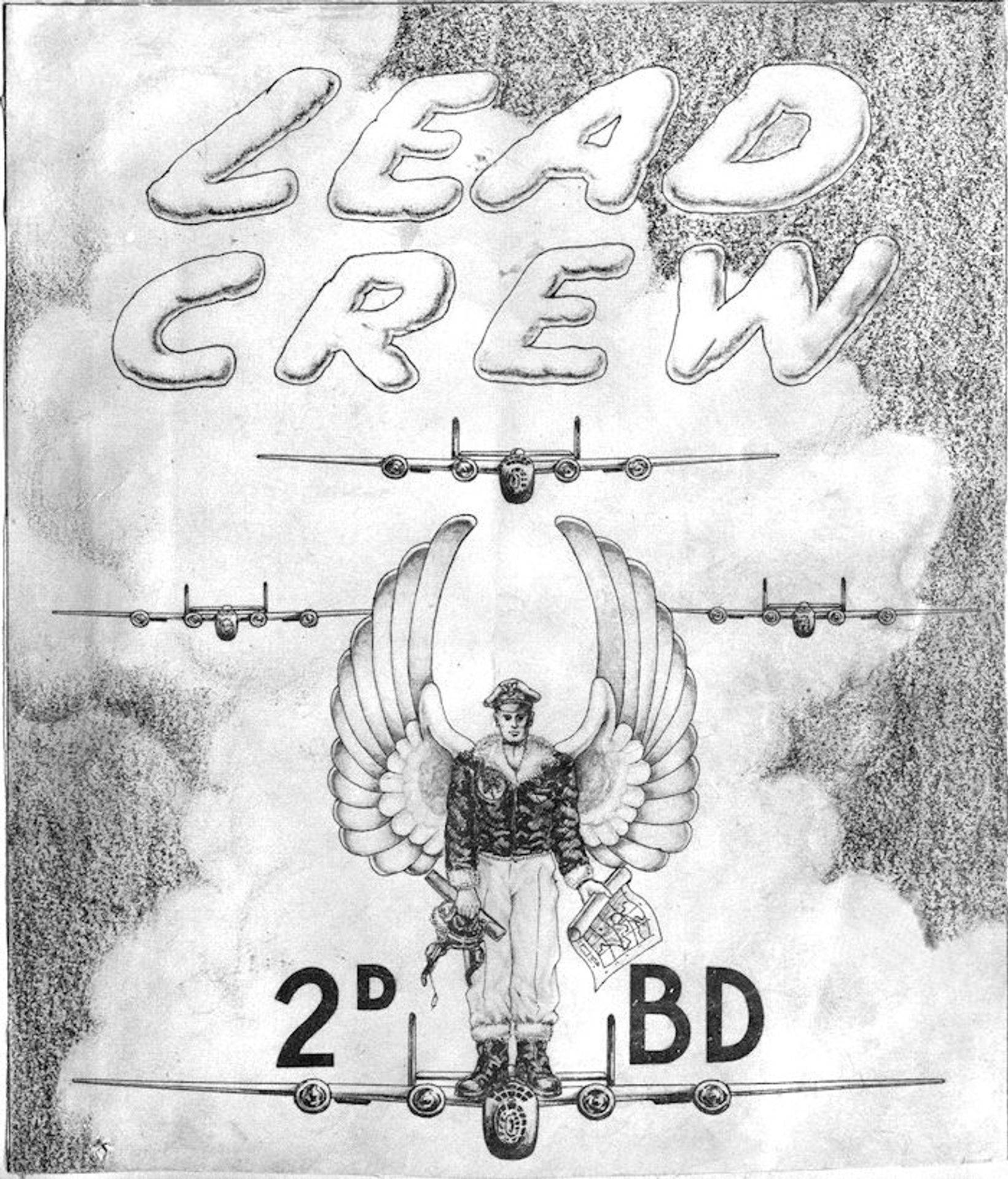
Contents
I. Foreword
II. Individual Responsibilities and Functions
III. Section Responsibilities
IV. The Mission
V. Procedure Check List
I. Foreword
1. Introduction
a. Probably the most important tactical lesson learned from our experience to date is that good bombing patterns and good defensive formations depend primarily upon good leadership in combat. This lesson stands out clearly and unmistakably; it is obvious to everyone who participates in a combat mission.
b. An equally important lesson but one which is not too obvious, is that leadership, in addition to the tactical movements directed by the Pilot, includes accuracy in navigation and accuracy in bombing. The most skillful Commander and Pilot alone cannot exert successful leadership; he must be assisted by a skillful Navigator and a skillful Bombardier. In other words good leadership requires a good Leader Team.
c. To provide these Leader Teams, each Group has been required to organize and train, as Leader Crews, three such teams per Squadron.
d. The success or failure of each combat mission depends in large measure upon the efficiency with which these Lead Crews perform their important duties. For this reason, it is vital that each Lead Crew constantly study and train to perfect its technique. Nothing must be left undone that will contribute in the slightest degree to the successful accomplishment of each mission.
2. Selection
a. It is highly important that the responsibility – and honor – of leading formations into combat be given to the most capable men available. It is equally important that these men be given adequate training and the best of equipment. The personnel comprising Lead Crews must be very carefully selected and, for each duty, represent the Squadron Commander’s choice of the best qualified individuals in the Squadron, regardless of rank. Rank and sentiment have no place in these selections; efficiency and results are the only measures of success.
b. The maximum in good judgement and courage should be demanded of Leader Crews and the actions of each member during all phases of each combat mission carefully checked upon return. Errors in judgement or lack of courage are not to be tolerated; and any Pilot, Navigator or Bombardier whose temperament or ability are in question should be replaced promptly and ruthlessly. Conversely, those who successfully lead their units on combat missions, creditably discharging the responsibility placed on their shoulders, will be given special consideration for promotion and decoration.
c. The airplane selected for each Leader Crew must be modified and equipped with every approved device including GEE. First priority should be given them in repair, modification, and installment of equipment.
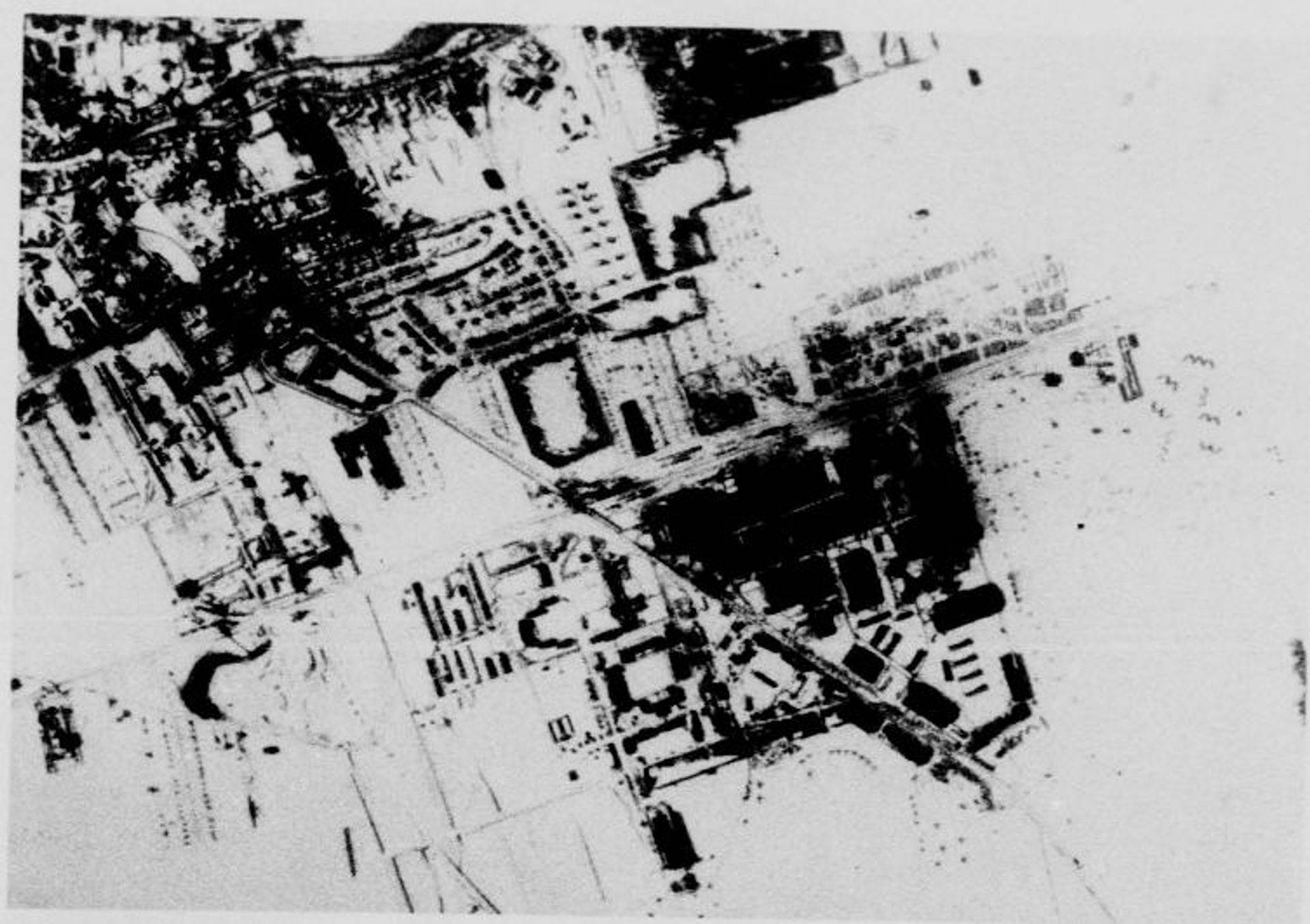
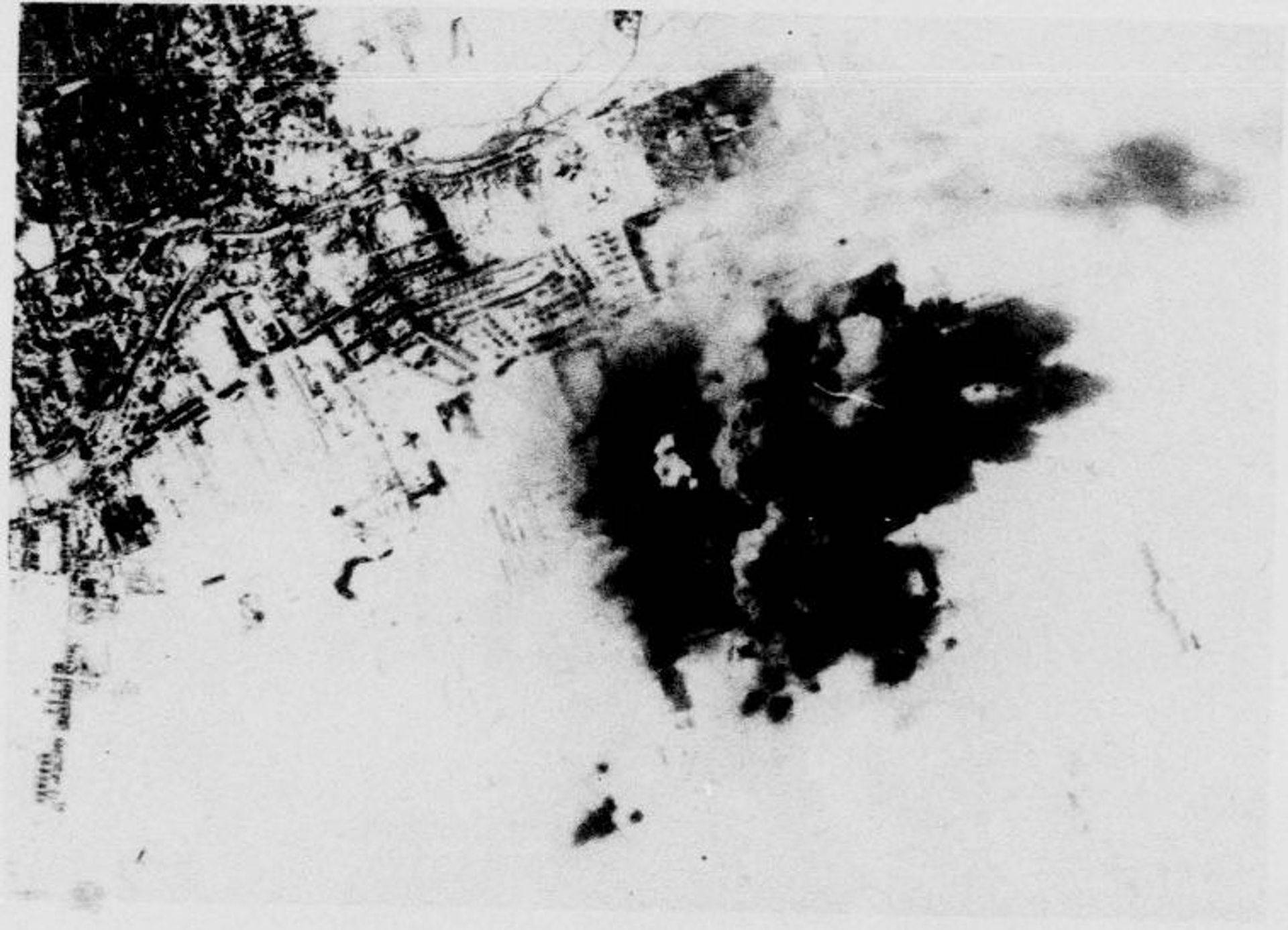
II. Individual Responsibilities and Functions
The Air Commander
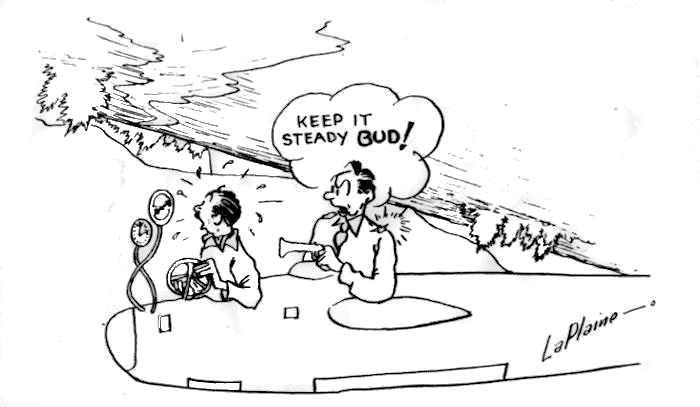
1. Responsibilities
a. Air Commanders are officers who are qualified first pilots on the B-24 type aircraft and thoroughly experienced in combat and of proven leadership ability. They are responsible for the tactical disposition of their respective formations and must transmit over VHF or have transmitted over W/T all orders and instructions required to control the formation and to insure [sic] the success of the mission; as well as staying in contact with leaders of formations before them and behind them in order to obtain information regarding weather difficulties, flak areas, enemy aircraft, or any other difficulties encountered by these formations. By doing this, it will be much easier to maintain the integrity of the Division formation and to further insure [sic] the success of the mission.
b. Air Commanders must be thoroughly convergent with all SOP of the Eighth Air Force, 2d Bomb Division and Combat Wings, as well as with all pertinent material presented at the briefing. It is highly desirable to have them ride in the Co-Pilot seat rather than on the flight deck in that from this point of vantage there is better vision, and would facilitate their “taking over” the airplane in the event the Pilot became incapacitated.
2. General
a. Immediately after briefing all Air Commanders – if briefing is received at a PFF station – should discuss with one another flare signals to be used, routes in and out, uncovering at IP, rallying. Altitude and speeds on withdrawal and position to begin letdown.
b. If the mission is not a PFF and briefing is received at home station, Group Air Commanders of lead and deputy lead ships and their Pilots should discuss Aldis Lamp signals to be used for changing lead or to shift to different VHF channels as well as a general re-hashing of flare signals for climbing, aborting, IP, attacking secondary, abandoning mission and summoning fighter aid. Further along this line, Air Commanders should discuss code words such as unit designations, fighter support codes, IP code words, etc.
c. Group Operations will be responsible for securing the most up to date weather information from Division and based on this information further discussion should be had relative to possible weather difficulties.
d. Changes in plans for assembly or attack should be thoroughly covered – these to be alternate plans made necessary by cloud or contrail troubles. It would be helpful for all to have a little discussion on the method of Wing and Division assembly, paying particular attention to the relative positions of all the unit involved.
e. It is the Air Commander’s responsibility to see that his map folder is complete with “Captains of Aircraft” map (routes, times, altitudes, flak areas, etc.), flight plan, weather schedule, formation plan, and communications “flimsy”. He should spend considerable time on the routes, location of IP and prominent landmarks nearby, scheme of maneuver from IP to Rally Point (including process of uncovering, turning off target and rallying) and know definitely what other units are to be in that vicinity. A further knowledge should be had of units ahead, the force, interval and their assigned targets, and the same knowledge regarding those following. Lastly, he should have at his fingertips the plan of fighter support, types of fighters, points of rendezvous and call signs.
The Pilot
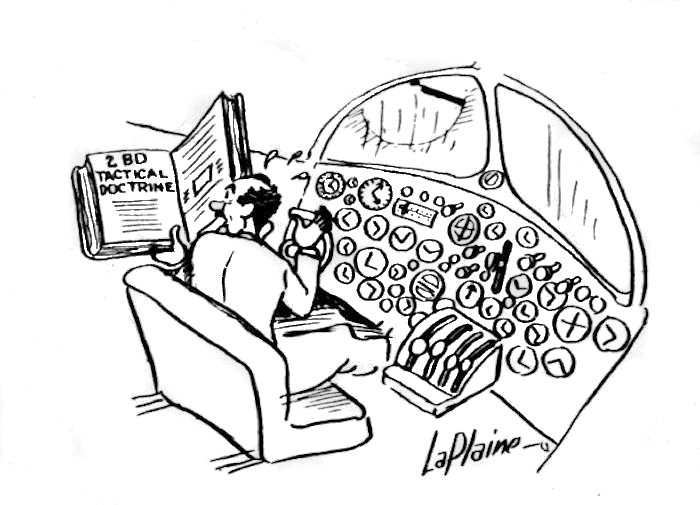
1. Responsibilities
a. A Lead Pilot is an officer of proven leadership ability and thoroughly experienced in combat. He must be an Aircraft Commander in every sense of the word. He is responsible for, not just the lives of his crew – but the success of the mission as well as the lives of every person in the formation. His is the task of leading smoothly – avoiding sharp turns, wild evasive action, or anything that endangers the integrity of the formation. A working knowledge derived from constant study of the 2d Bomb Division Tactical Doctrine will pay dividends in keeping a close, compact formation.
b. A Lead Pilot’s duties are such that the training he receives is through his own aggressiveness and initiative and not so much the fault of any other person. Therefore, he must train himself as well as his crew. He must be familiar with all SOP of his Group, Wing and the 2d Division as well as material presented at the briefing.
c. A Lead Pilot still must train his crew. The crew must be completely competent to perform its duties in a highly efficient manner. The Pilot naturally cannot train each member individually, therefor he must delegate authority to various crew members in order to develop an efficient crew and one that will take the initiative. The crew should be familiar with all pertinent SOP and, in order to become more efficient, each man should understand the difficulties encountered by other crew members at their respective jobs. This creates understanding and a sense of cooperation which is needed so badly in Lead Crews.
2. General
a. During the main briefing, complete mission data forms must be prepared with all pertinent information written thereon. Leave nothing to memory – write everything down. Formation plans must be secured for both the flight deck and the waist or tail observer. With the pilot rests the responsibility of making certain that his observer (usually the co-pilot) understands all details concerning the Group’s position in the Wing, the Wing position in the Division, and relative timings of all Divisions within the Air Force.
b. After briefing, the Lead Pilot should discuss with the Air Commander location and times for assembly and pertinent information regarding the formation. He should discuss with the navigator and bombardier routes, general heading of bomb run, and rallying plan.
c. During the mission, he should stay on interphone to coordinate crew activities, keeping in constant touch with the navigator in anticipation of course changes. Last, he is responsible to the Air Commander and must keep him well posted on the progress of the mission.
The Co-Pilot
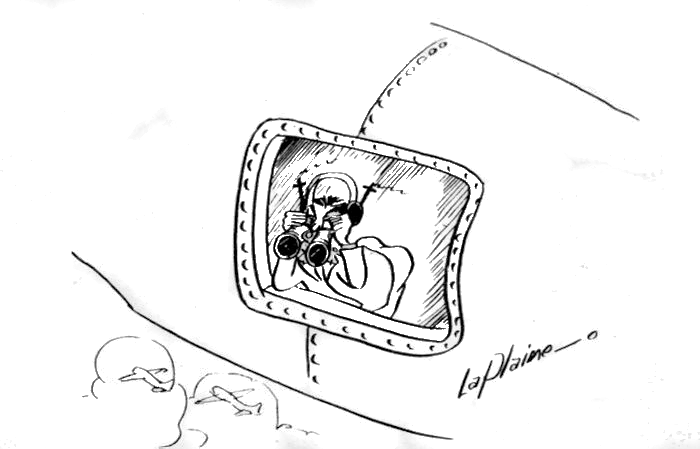
1. Responsibilities
a. As normally only rated Pilots will be assigned as Observer or Formation Control Officer, the Co-Pilot is, in almost all cases, assigned this task. To perform this duty, he must be an intelligent, responsible person, who is fully cognizant of Group and Wing tactics. His duties are such that he must completely understand: the type of formation his Group will fly; the disposition of Squadrons; the relationship to other Groups in the Wing and Division; and identifying flares and markings of all units.
b. The Control Officer should be as thoroughly conversant with all pertinent SOP as the Air Commander and Pilot. He should know by heart the identification of each Group in the 2d Division. He should ride in the rear of the lead ship, as it affords better vision and in all cases he must carry binoculars to aid him in his task.
2. General
a. After the briefing, the Co-Pilot should study the disposition of all Groups scheduled to be before or behind him as well as the disposition of his own Group and Wing. After assuring himself that he understands all SOP pertinent to the mission, he should accompany the crew to the airplane and have the equipment checked prior to the arrival of the pilot and Air Commander.
b. During the assembly, the Observer should report all aborting aircraft. He should keep the Pilot informed as to the progress of the formation from his point in the rear of the aircraft, as he has better visibility and can aid materially in facilitating a more rapid assembly.
c. During the mission, the Observer must be fully alert to all situations, reporting to the Pilot all aircraft abandoning the mission or leaving the formation for any reason and the disposition of other Groups. There are many instances in which he can materially contribute toward the success of the mission; for example, a Group might be lagging and having difficulty closing its interval. The Observer can inform the Pilot in order that a dog-leg may be made and thus close up into a Combat Wing formation or as the Field Order dictates.
The Navigator
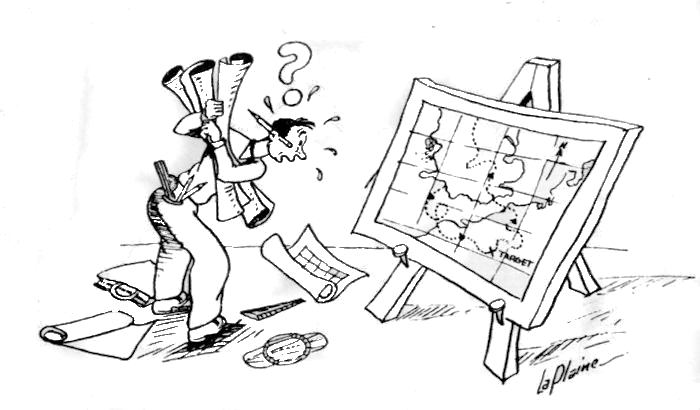
1. Responsibilities
a. The tactical employment and range of our bombers necessitate the most accurate navigation and timing. Routes must be flown as briefed and rendezvous points hit on time. The Navigator chosen to lead a formation must have the skill, experience and confidence to accomplish this. He must be the type of man who, on the ground, constantly practices with his navigational instruments and studies target areas and maps which help him in the performance of his function. His is such an exacting job that the use of navigational aids should be second nature to him.
b. The Lead Navigator is responsible for preparing an Air Commander’s Chart as well as his own. This will have magnetic courses, times and changes in course, flak areas, IP, target, rally points, and times crossing enemy and friendly coasts both ways. He should study this Chart carefully before time for station even if it means that special transportation must be provided.
2. General
a. During an operation, the Lead Navigator’s sole purpose is to lead his unit to the target as briefed, aid the Bombardier in identifying the target, and then lead them home again. To do this, his determination to fulfill his obligation as a leader should overcome all other factors (flak, enemy fighters, engine trouble, etc.) that would tend to distract his attention. To do this takes will power and courage – but it will pay dividends in the successful completion of the mission.
b. In order to do accurate navigation and to return with an accurate story of the flight accomplished, it is absolutely necessary to maintain an accurate log and track chart. Positions, computations, directions and distances must be transferred to a Mercator chart for use in order to be accurate, except in very rare instances. Over and above this, the Navigator’s log and track chart, along with the strike photos, are the real basis on which the success of the mission is determined, as well as the character of enemy opposition. Consequently, these entries should always appear in all logs.
c. Pathfinder Squadrons have made the Pilotage Navigator a regular member of the PFF crew. This has resulted in definite increase in efficiency and it is highly recommended to Group Commanders that Pilotage Navigators be assigned to all Lead Crews.
The Bombardier
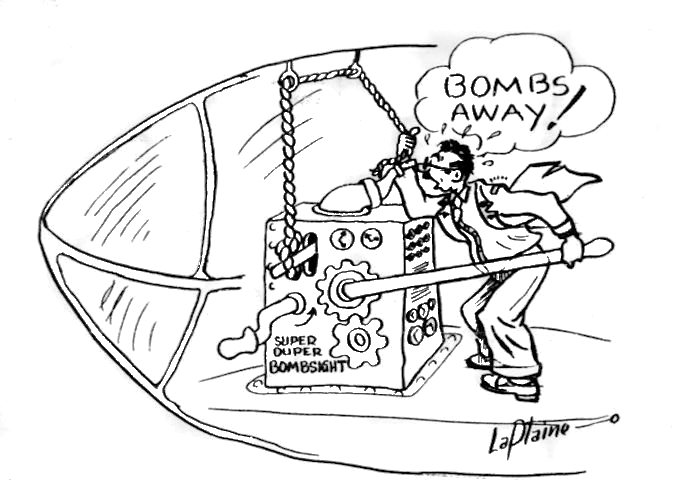
1. Responsibilities
a. Under our present method of bombing, the Lead Bombardier is entirely responsible for getting the formation’s bombs on the target. He is required to perform an important task with absolute precision at a time when the enemy is trying its utmost to distract and destroy him. His is a great task and he must be physically and mentally attuned for this function.
b. After briefing, the Bombardier will secure all maps, charts, and tables pertinent to his business. He should discuss with the Pilot and Air Commander the course of action to be taken from both Combat Wing and Group IP’s to the target, as well as the method of bombing secondary targets and targets of last resort.
c. Upon reaching the airplane, the bombardier is responsible for a thorough check of all his equipment. I any equipment is found to be unsatisfactory, he will immediately notify the section responsible for its repair.
2. General
a. Inasmuch as bombing results are contingent not only upon a requisite technical ability but also a properly organized and coordinated target and area study, it is absolutely necessary for the Bombardier to completely familiarize himself with all aspects of the target and approaches. He must be so thoroughly conversant with the target and the approach that with the aid of maps, photos, and target guides, he can bomb effectively under almost any condition where any part of the target area is visible. Improper or misguided study of targets is a complete waste of time.
b. A Lead Bombardier must do everything in his power to prepare himself for these all important minutes between the IP and the target. Constant practice on the range and trainers, camera bombing, along with the use of the auto-pilot, and the ABC is of primary importance. He must know his aircraft bombing equipment thoroughly. Religious attendance at target identification and navigation classes is required, as well as taking advantage of all flight to practice pilotage navigation. He must always explore the possibilities of making improvements in procedure and increasing the level of his efficiency.
Lead Radio Operators
1. The importance of tactical communications cannot be over-emphasized. Upon the lead radio operator rests the responsibility of receiving and transmitting commands which may change the entire course of the mission.
2. The lead radio operator must know his equipment like a book and be letter perfect in his undertaking and execution of all radio procedures.
3. The airplane commander relies on the radio operator to keep him in contact with other forces in the air and the Division Group Station. Only constant practice and study of procedures will develop a lead radio operator.
Lead Crew Gunners
1. Enemy fighters know full well the importance of the lead ship and it is the gunner’s job to ward off their attacks so that the ship can accomplish its aim of bombing the target. This is no place for wild shooting, every burst must be aimed, every shot made to count.
2. Gunners are the eyes of the pilot, and it is their duty to keep him informed of the disposition of the formation and the presence of enemy or friendly fighters. They must excel in aircraft recognition and understand tactical formations and procedure.
The Lead Airplane
1. A Lead Crew is absolutely worthless without an airplane equipped and completely satisfactory for leading. The Lead Crew should check its airplane in the air the day before a mission if at all possible. The following procedure is suggested under the supervision of the Airplane Commander.
a. Before take-off, the racks should be cocked and the bomb-bay should be thoroughly checked for any hindrances to door movements, such as, mud, tools and cartridge cases.
b. At altitude (the higher the better), the bomb-bay doors should be opened and the racks run through with the intervalometer. The AFCE should also be tested for proper functioning. The Pilot should first trim the ship and then turn it over to the Bombardier, who will make several turns to the right and left with either his clutch of bombsight, noting the response and reaction of the ship. The Pilot must make sure that the ship is maintaining a constant altitude during these maneuvers. The degree of bank must be noted, making sure it is neither too great nor too little, and, after having put the ship into a turn, the PDI should be checked carefully to make certain that it returns to center. The success of AFCE and A-5 bombing depends to a large degree on the coordinated efforts of both the Bombardier and Pilot in setting up the equipment.
c. On these check flights at least one practice bomb should be dropped. If circumstances prevent the dropping of bombs, several photo runs should be made on simulated targets. These photo runs should be made as realistic as possible, using a pre-determined IP and data pre-computed with the ABC computer set into the bombsight. Manual runs should not be neglected, so that in [an] emergency this method of bombing may be resorted to with confidence. This takes a high degree of teamwork can produce excellent results.
d. The Navigator should carefully go over his equipment, above all checking his GEE equipment and his compass. Navigation without reference to the ground is the best method of testing the proper functioning of the instruments. “No wind”, or air plotting is recommended as an excellent check on the compass, and practice in obtaining winds and applying them to determine D/R positions gives the Navigator invaluable experience for deep penetration raids beyond the range of GEE. The radio compass must also be checked very carefully as it has been found that bearings to the port and starboard many times have large errors. The Navigator has a tendency in this theater to discard his celestial work, but it is good insurance for him to “keep his hand in” by occasionally taking a few shots while airborne on these check flights, so that should the occasion arise where he needs celestial assistance he can have confidence in what he has plotted. Too often the emergency has arisen on operational missions where the lead Navigator has had to resort to celestial, but without success, either because of poor results in taking the bearings or because of lack of confidence in what was derived.
e. The Radio Operator should try out his transmitters and receiver and the VHF. It is very necessary that this equipment function properly since the Radio Operator is responsible for receiving and transmitting all Division broadcasts. Las, but not least, the interphone must be working properly. Noting can disorganize a mission more than interphone failure at a crucial moment.
f. Gunners should check their turrets, sights and guns thoroughly.
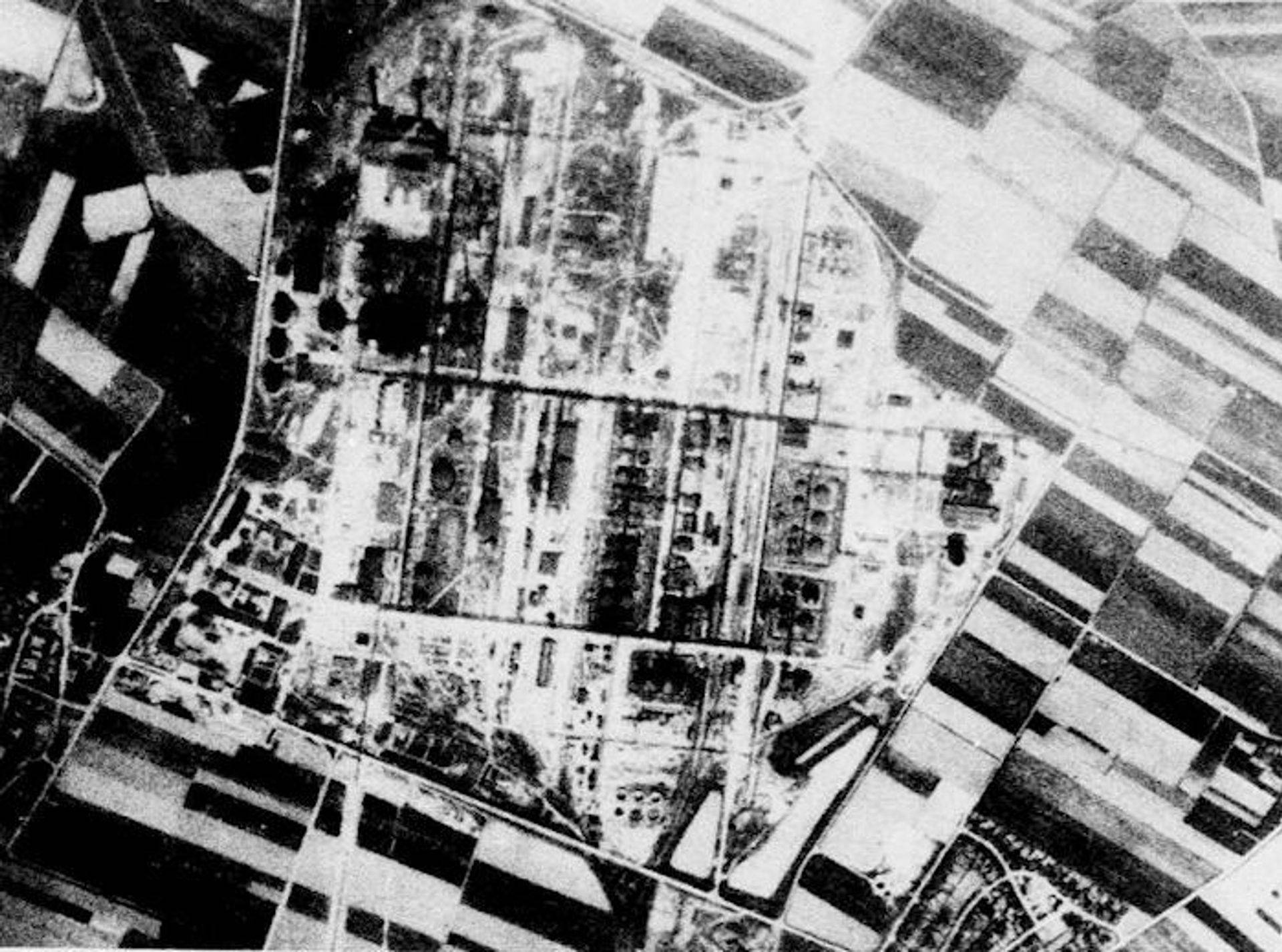
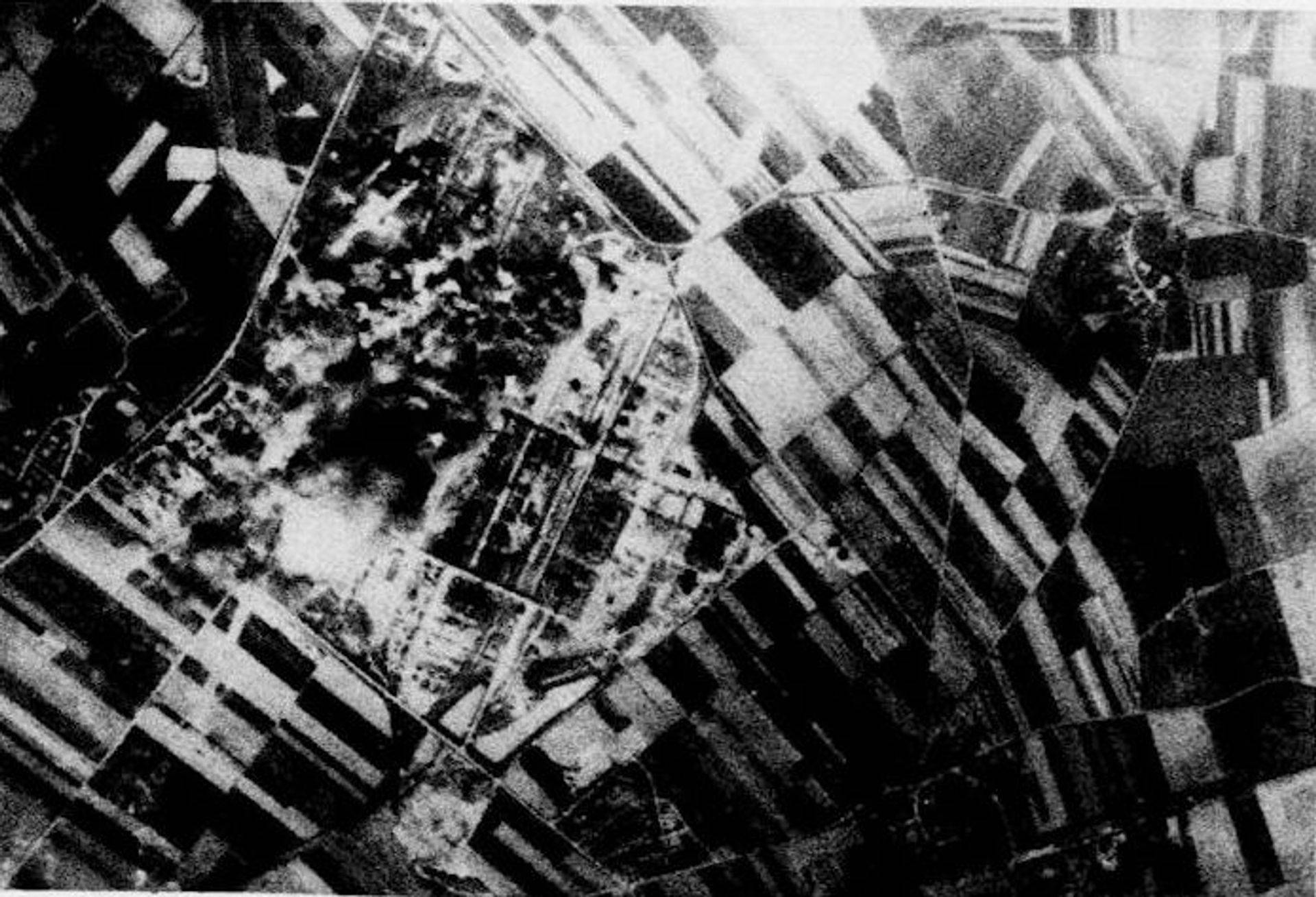
III. Section Responsibilities
1. Group Operations
a. In addition to the normal responsibility of this office in connection with briefing and scheduling aircraft and crews, the following will be accomplished: The Operations Officer will arrange for an extra Pilotage Navigator for the lead ship under any of the following conditions:
(1) At all times when the Group is leading the Combat Wing
(2) When the Group has an independent target
(3) When the Group is scheduled first over the target, regardless off position or route
b. Additional oxygen must be carried for the Pilotage Navigator in amount of two large low pressure bottles either carried in the nose or as part of the lead ship modification.
c. Provisions of paragraph 1, a and b do not apply when the Group is led by H2X aircraft since all ships have been modified to include extra oxygen and the Pilotage Navigator is part of the normal H2X Lead Crew.
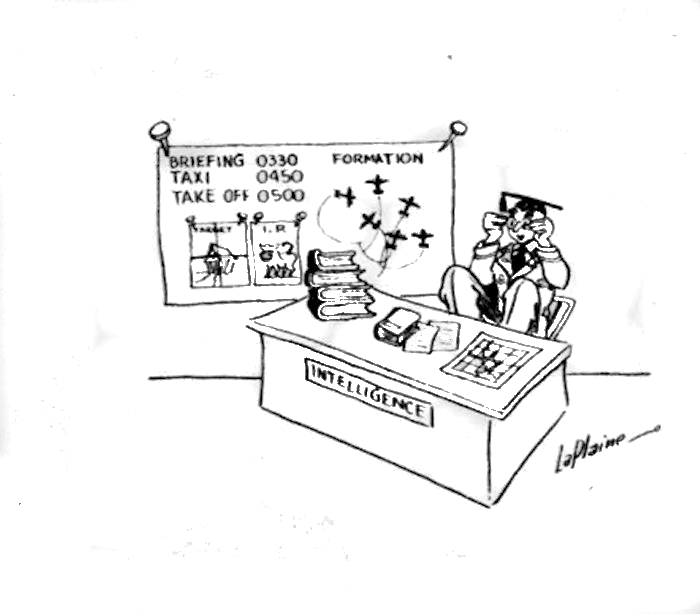
d. It will be necessary for the Group Operations Officer to make a thorough check of his Lead Pilots, Navigators and Bombardiers. This check will include a thorough estimate of the Pilot’s experience and ability and particularly his AFCE and A-5 training. (This to be obtained from the AFCE or A-5 Officer). In connection with the Lead Navigators and Bombardiers, the Group Operations Officer must secure from his Group Navigator and Bombardier a complete resume of capabilities. Particular attention should be paid to success or failure of past missions led by these men. As soon as target information is available, the Group Operations Officer must arrange for a short pre-briefing of key personnel in the War Room. This should not be done too late at night. Properly coordinated target study will pay dividends on any mission. In determining the ability of the Bombardiers to lead the mission, an estimate of his success on practice camera bombing missions must be made. All of the facts pertinent to all phases of navigation and bombing that are ascertained beforehand will allow the Operations Officer ample opportunity to make sound selections and changes on the line-up for the mission. Close coordination between Group and Squadron Bombardiers and Navigators is necessary.
2. Group Intelligence
a. It is the responsibility of the Intelligence Section to prepare all information relative to the route to the target and to make this information available to Group Operation and crew members concerned.
b. The Group Intelligence Officer will have to make a thorough check of the route for flak. He must also secure and know completely all information pertaining to the activities of other Eighth Air Force Divisions. It would be well for the Group Intelligence Officer to make a study of the target, IP, features of terrain and the route before Lead Teams come in for their target study. Then, during the target study, the Intelligence Officer can question the Bombardiers and Navigators on salient points of the mission. The Group Intelligence Officer can be of considerable help in training Bombardiers and Navigators in the correct study of charts and maps.
3. Group Engineering
4. Bombsight Department
5. Group Armament and Group Communications
6. Group Bombardier
a. It is the Group Bombardier’s job to correct one of the two weakest spots in the Group. Most bombing errors can readily be classified into either poor target identification or gross personnel error in the use of the bombsight. In order to correct this, the Group Bombardier must have an efficient staff which will properly supervise all Bombardier training and all pertinent Bombardier records. This will enable the Group Bombardier to ascertain the capabilities of all Bombardiers. He must get the full cooperation of his Squadron Bombardiers. It is important to keep accurate and up-to-date records on bomb plots of all missions.
b. Camera bombing is one of the most significant and important phases of training and it teaches proper coordination between Bombardier, Navigator and Pilot. No camera bombing mission should make only one camera run – a minimum of four should be scheduled beforehand.
c. It is the Group Bombardier’s responsibility to furnish the Group Operations Controllers with all pertinent information on Lead Bombardiers well before each mission. Records of practice bombing on ranges in the UK must be accurate and up-to-date. Lead Bombardiers must prove that they can drop bombs accurately.
7. Group Navigator
a. Another weak spot in almost any Group is faulty navigation, most of which usually occurs in the target area and especially concerns the failure to properly identify the IP. Here again, it is imperative that Squadron Navigators cooperate. Fully coordinate camera bombing missions with the Group Bombardier’s office. It will be necessary to have frequent meetings with all Navigators to find out their weaknesses and check on their abilities. Probably one of the gravest errors is proper pin-pointing and pilotage within the target area. Navigators must learn to look first for large identifying features of the surrounding territory and work those down to the target, rather than attempting to pick up the target first while it is still as much as twenty-five miles away.
b. The Group Navigator must supervise intelligent route and target study both before every mission and throughout each week on high priority targets. The Group Navigator will be responsible to furnish the Group Operations Controllers with information pertinent to Lead Navigators prior to any mission.
8. Squadron Commanders
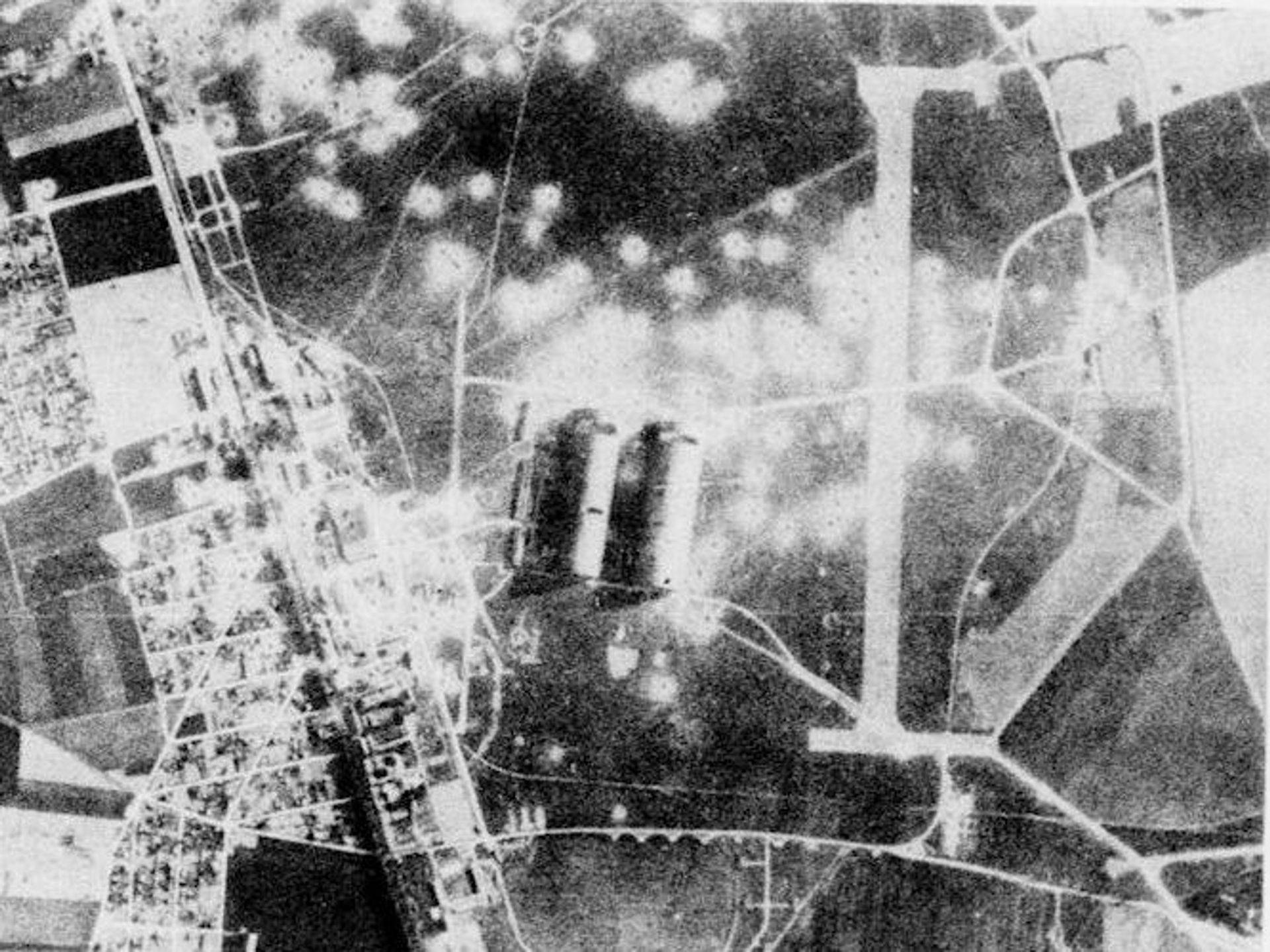
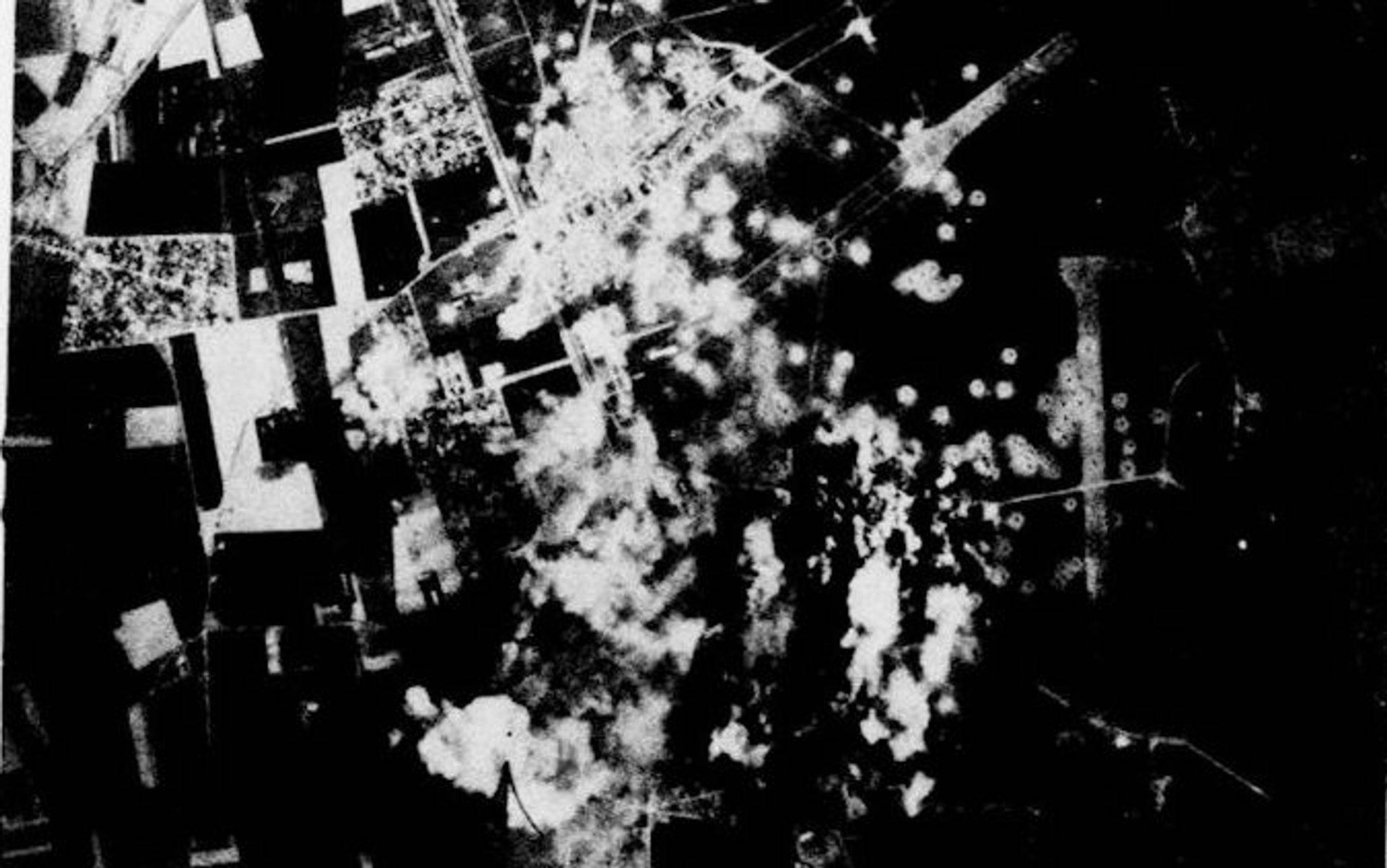
IV. The Mission
1. Assembly
(1) Always form as low as possible. Never above 12,000 feet, except as dictated by cloud cover. Remember oxygen must be conserved and assembly is easier at lower altitudes. The Pilot and Navigator must be fully aware of wind direction and velocity in order to position the Group properly over any buncher, splasher or airdrome. Flares should be used plentifully. Aircraft can be kept in a moderately steep bank. Remember that your circle is much greater at 12,000 feet than at 6,000 feet, if at both altitudes you keep the tip of the inside wing just outside the field boundary lights. Use the radio intelligently. It is an aid to set the magnetic compass pointer to the direction of the wind. AFCE equipment must be set up for lead ships as quickly as possible.
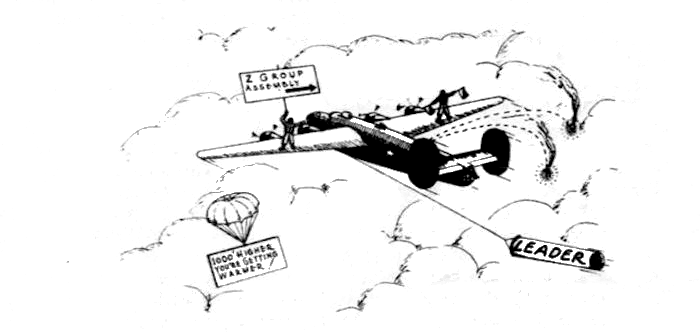
b. Combat Wing Assembly
(1) All officer and enlisted personnel of both the lead and deputy lead aircraft must be properly briefed on everything pertinent to the Combat Wing assembly. This includes such things as positions of the Groups involved, Aldis Lamp and flare signals, identifying Group letters, assembly area and altitude. The Group Air Commander will fire identifying flares and flash the proper Aldis Lamp signal at any time when the identity of the Group will be of value to other B-24 Groups in the Combat Wing. During assemblies under conditions of poor visibility, more flares or light signals must be used. The Pilot and Navigator must coordinate the assembly and be prepared to make changes necessitated by actual weather conditions encountered. The condition if the formation, i.e. tight or strung out, as reported by the formation observer must be considered in altering the assembly flight plan.
(2) Second and Third Squadrons must be in position before Combat Wing assemblies are attempted, otherwise the remaining Groups will be unable to position themselves properly. These Squadrons normally should be high or low and close in. This position should be flexible. Never let the Second Squadron get in trail a half mile or more. Never let the Second or Third Squadrons be abreast of the First Squadron while on the inside of a turn. The Second and Third Squadrons must fly a flexible position laterally in order to maintain a constant rearward position on the leader. Regardless of the violence or the suddenness of any maneuver on the part of the First Squadron, the Second or Third Squadron leaders must never be caught unprepared and both should be able to maintain their relative forward positions by crossing over or by increasing the bank in a turn. A gradual climbing turn can be executed. Do not reserve your good formation flying over for times when fighters hit you. If you can’t form and maneuver the Squadrons, Groups or Wings over England, you won’t be able to do it when the going is rough over Europe. Here are a few simple formation rules:
a. You can only close distance by turning to the inside whether you are an individual ship, a flight leader or a Group leader. Never stay on the outside or in trail in a turn if you are attempting to close. Leaders must turn to facilitate closing. Do not abuse your engines by trying to close when you are in trail or on the outside. If the turn is into you, drop down if you are the wing man. If the turn is into you and you are a high flight leader, drop down. If you are a low flight leader, pull up. If the turn is away from you and you are the wing man, close your interval immediately. Never get wide or in trail. If you are flying proper formation, it is possible to do so on three engines. Use power or altitude or both to get your position as quickly as possible as the turn starts away from you. If you are a low or high flight leader and the turn is away from you, close immediately. Never stay wide – never remain as low or as high. Be in a position to anticipate an increase or decrease in the bank or a sudden roll out and a reverse turn into you. The reason a flight leader should never stay wide on a turn away from him is that he is turning in a circle of greater radius.
(3) Remember these points and you can keep formations compact on any turn. Never make the mistake of going blind, getting ahead of or in trail. Normally, this mistake is caused by pulling up and getting away from the leader or not banking your plane until your leader has left you in trail. If you do not violate these few simple principles, you will never have any formation trouble.
c. Division Assembly
(1) The Lead Crew Navigators, the Lead Crew Pilots and the Air Commander must plan the assembly of the Division in the event the Group is leading Combat Wing. It should not be necessary for the Air Commander to tell the Pilot when to turn, when not to turn, or when to cut a leg short in order to make the time good at the departure point. The Pilot, the Navigator and the Formation Observer must work as a team, plan ahead – you know your objective, i.e., to maintain the integrity of the Combat Wing and to make your departure point, altitude and time good; consequently, cut corners to do this but never allow the Wing to break up. Never take the Wing through instrument weather in order to make good the departure point; change the Division assembly route and altitude in order to keep together – you can join over the Channel or over the North Sea. Keep the Wing together!
2. Enroute
a. The Navigator should give the signal to test fire the guns after reaching altitude. Attempt to get several checks on your ground speed, drift and winds aloft through the use of GEE, D/R, or visual check points on making landfall over enemy occupied or friendly coast.
b. After landfall has been made, there is little necessity for the leaders to maintain radio silence provided necessary information is required to be passed on to other units. The Formation Observer should be giving information constantly to the pilot. As soon as enemy fighters are sighted, the Navigator or the Bombardier must maintain a constant to watch for head-on attacks. The Pilot should be alert to check the navigation with the Navigator, reporting any deviation in time schedule to the Air Commander in order that messages may be sent to Division by W/T and R/T. The Fighter Ground Sector Control may be called over VHF. All crew men in calling out Fighters to the Pilot over the interphone should talk slowly and in a low pitched voice – no long winded conversations are required – make your report and get off the interphone.
c. All gunners must be constantly on the alert for attacks; it only takes one pass to knock you out if you are dreaming or reading Flash Gordon. A fighter attack lasts about ten seconds; you must get him first. The top turret operators in the forward part of each Squadron should scan to the front most of the time and, at least half of the waist and turret operators nearest the sun should watch into the sun. Don’t forget to carry sunglasses. The Combat Wing Air Commander should give the command to “lower ball turrets” whenever he thinks it advisable. If the rear Group of the Combat Wing gets hit by fighters and lowers ball turrets, this information should be relayed to the Combat Wing leader in order that he may direct the lowering of all ball turrets or he may choose to slow down.
d. If you are leading a Group, Wing or Division, keep closed up in order to give yourself maximum protection. Do everything possible to do two things enroute: first, keep the Combat Wing together and on course; second, keep your time schedule. It is better to be slightly ahead of time on the penetration than to be late; on the withdrawal the opposite is true. The Pilot must memorize the times and general course headings; and all breaks in the straight line course. Navigators of all lead flights, Squadrons or larger units must know the disposition of the formation to the rear in order that they may fly around all heavily defended areas while enroute or on withdrawal. Pilots are to remind engineers to transfer all gasoline from wing tip tanks as soon as possible.
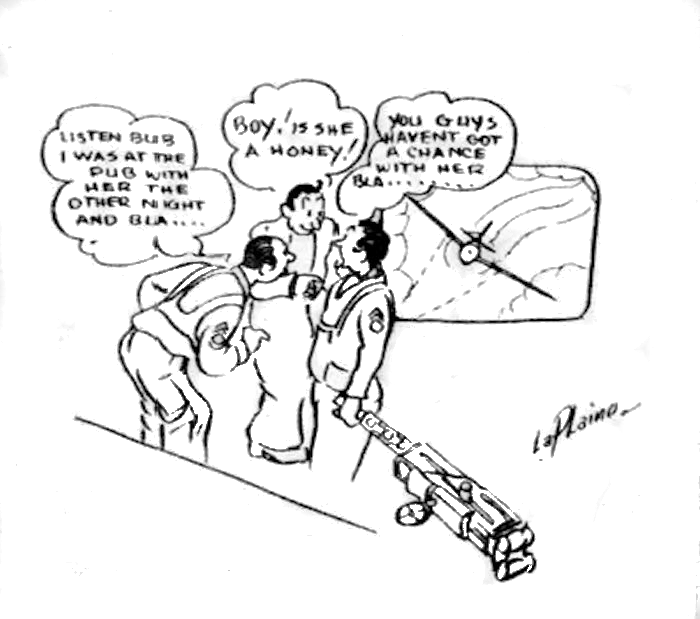
3. Stragglers and Evasive Action
a. You may become a straggler at any time due to enemy action. Generally speaking, if you are well in enemy territory you are safer if you can lighten your load sufficiently to stay with the formation although you may be on three engines.
b. If you have to leave the formation and return alone, you should seek cover by flying in the clouds while over enemy controlled territory. Attempt to get fighter support if at all possible; it doesn’t cost anything to call over VHF. You should not have too much trouble getting fighter support if you become a straggler on the withdrawal.
c. If there is no cloud cover and you are unable to get fighter support, hit the deck. The deck is zero altitude, five hundred, three hundred and two hundred feet are too high. In getting to the deck, don’t try to dive straight down – do a falling leaf if fighters are about – make your tail and waist gunners keep you informed. If your interphone is out, do a falling leaf regardless of what you may think; skid the airplane every few seconds, lower half flaps in order to decrease your speed and to increase your rate of descent – remember you can’t out dive or outrun a fighter; you are cold turkey for him diving straight on or in a gradual turn – skid or do a falling leaf or both. When you get to the deck, you are better than an even match for him provided your tail, nose and top turrets are working, so much the better if your waist guns are operating. While under attack on the deck, skid your ship just before he fires – your gunners must judge the rear attacks and report them – turn sharply into the fighter on all frontal attacks except from twelve o’clock; for the twelve o’clock [attack] skid and pop up and down in rapid succession when he comes to 1200 yards or less. There is little danger of the radar or ground observers picking you up while on the deck but play it safe by changing your course 15 to 30 degrees each ten to fifteen minutes. Stay on the deck in crossing the Channel or North Sea or less than fifty miles from the English coast.
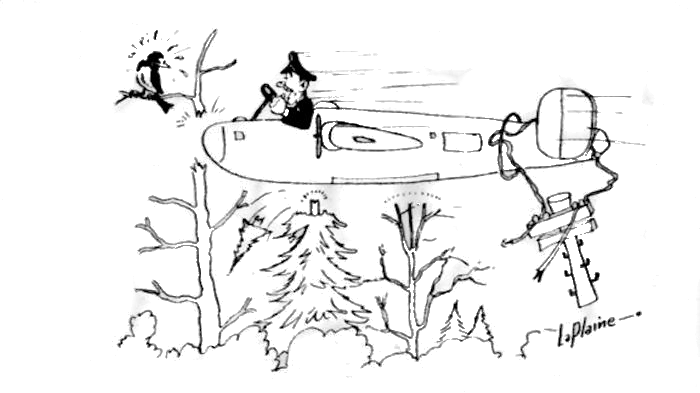
d. If your route out takes you over the Pas de Calais area, make every attempt to avoid this area or any area which may become the scene of the invasion in the future. The Germans have recently put in a helluva lot of light flak and ground machine gun nests in the Pas de Calais area. If you have to go over this area, remember to hug the ground, stay below the high obstacles and trees – pop up over them, drop back to the deck. Be on the alert for flak towers along the coast.
4. IP to the Target
a. Remember the simple note – don’t try to find a needle in a haystack until you have located the haystack – sounds a bit stupid doesn’t it – well we all act bit stupid at times – definitely locate the large landmarks and features of terrain near the IP before trying to locate the IP as normally it is a small town or city or cross roads.
b. The Bombardier and Navigator must work together in locating the IP by pin-pointing the largest features, then the smaller features around the IP, until the IP is located. If you are unable to definitely pin-point the IP but you have pin-pointed several points around the IP, you are okay – turn on the bomb-run line, don’t go floundering all over the countryside trying to find a dot on the map from 15,000 feet or higher. Be sure to turn on the correct heading and hold it until you have identified the large features to the left and right of the course, then to the left and right of the target, then narrow down your vision and your course. Have the Navigator checking the time from the IP to the target.
c. In the target area, Air Commanders should contact the weather reconnaissance aircraft in order to determine the cloud cover and visibility. With this information, he should make his decision early on [as to] the method of bombing. Once the decision has been made to bomb H2X or visually, no attempt should be made to change targets or the method of bombing during the last few minutes of the bomb run. It is more important to hold the original decision on the target selected than it is to hold the decision of bombing by H2X or visually as the crew should be set up to bomb by either method as follows: with the H2X Mickey operator “killing” drift for the Bombardier and he in turn coordinating with the operator on his bombsight for range, the optics of the sight should be positioned on the target. This procedure allows the Bombardier to finish the run visually, if the weather permits, or release on range from the bombsight if undercast is solid.
d. If you have not picked up the target three to five minutes from the target, call the Pilot and have him call the deputy and ask if they have the target located. The deputy or number three Navigator and Bombardier may be able to give you some help but remember to stay on course – don’t go wandering off course. If the deputy sees the lead aircraft swinging off obvious course from the IP to the target, call him and tell him. Don’t hesitate to use VHF when it will aid in the success of a mission. If the Air Commander decides to turn over the lead to the deputy because of AFCE difficulty in the lead aircraft; remember the lead should be turned over at least twenty minutes prior to reaching the IP, as it takes a minimum of ten to fifteen minutes to set up the AFCE properly at 20,000 feet and it will take longer at higher levels with a heavily loaded ship. At least two coordinated turns should be made on AFCE. If the AFCE in the lead aircraft goes out when less than twenty minutes from the target, do not turn lead over to the deputy; make the run on PDI with the lead ship unless other reasons force a change of lead. If the run is on PDI, the Pilot must not kick the aircraft around. Center the needle slowly and if necessary with moderate pressure on the rudder but never violent pressure. The Co-Pilot should keep the air speed and elevation constant by controlling the elevators and ailerons with the Pilot free to work the rudder and control the power and RPM’s. On the bomb run, the power turrets of the lead ship should not be operated if the run is on AFCE. The operation of the AFCE is critical to any fluctuation of voltage. The number 2 and 3 aircraft of the lead flight must protect the lead from enemy fighter attacks. The lead may be turned over to the deputy as late as five to ten minutes prior to reaching the bomb released line. In case the PDI and interphone go out near the target release line, hand signals between the Bombardier and Navigator and between the Navigator and Pilot should be employed. This should be standard for all crews. The Lead Bombardier will ascertain the disposition of his Squadron, Group or Combat Wing in order that he may select a proper aiming point. For example: a twelve-ship Lead Bombardier should aim 75 to 100 yards to the left of the MPI. If it is a fifteen-ship formation with six ships on the left and six on the right, the aiming point should be the MPI for deflection.
5. Rally
a. The importance of rallying after hitting a target cannot be over-stressed. If individual Groups are bombing by Squadrons, it will, of course, first be necessary for the Squadrons within the Group to effect a quick rally. This cannot be done if the lead Squadron does not pull back on his power and keep his air speed at a maximum of 160 indicated. Usually there is a descent of 1000 feet after hitting a target and this descent, plus the holding back on power and air speed, will enable succeeding Squadrons and Groups to better close in on Group, Combat Wing and Division rallies. If the Division is strung out, it makes it easier for the enemy fighters to single out individual units for concentrated attack. Good, compact formations make for better defense and protection and remember it also makes it easier for friendly fighters to give effective fighter cover.
6. Route Out
a. It is just as important on the withdrawal to maintain briefed times for friendly fighter support as it is on the way into the target. Always remember that control points have been set up for your protection. When the Wing or Division or even a smaller unit does not make good it’s scheduled times, radio transmission reports must be made to secure adequate friendly fighter protection.
b. Remember that slowing down the formation may result in the salvation of crippled ships. It is the responsibility of observers in the tail and also ships in the rear of the formation to report cripples to lead airplanes. Too often a Group formation has been in such a hurry to get home that it has gone off and left crippled ships which are then easy meat for enemy fighters.
7. Return to Base
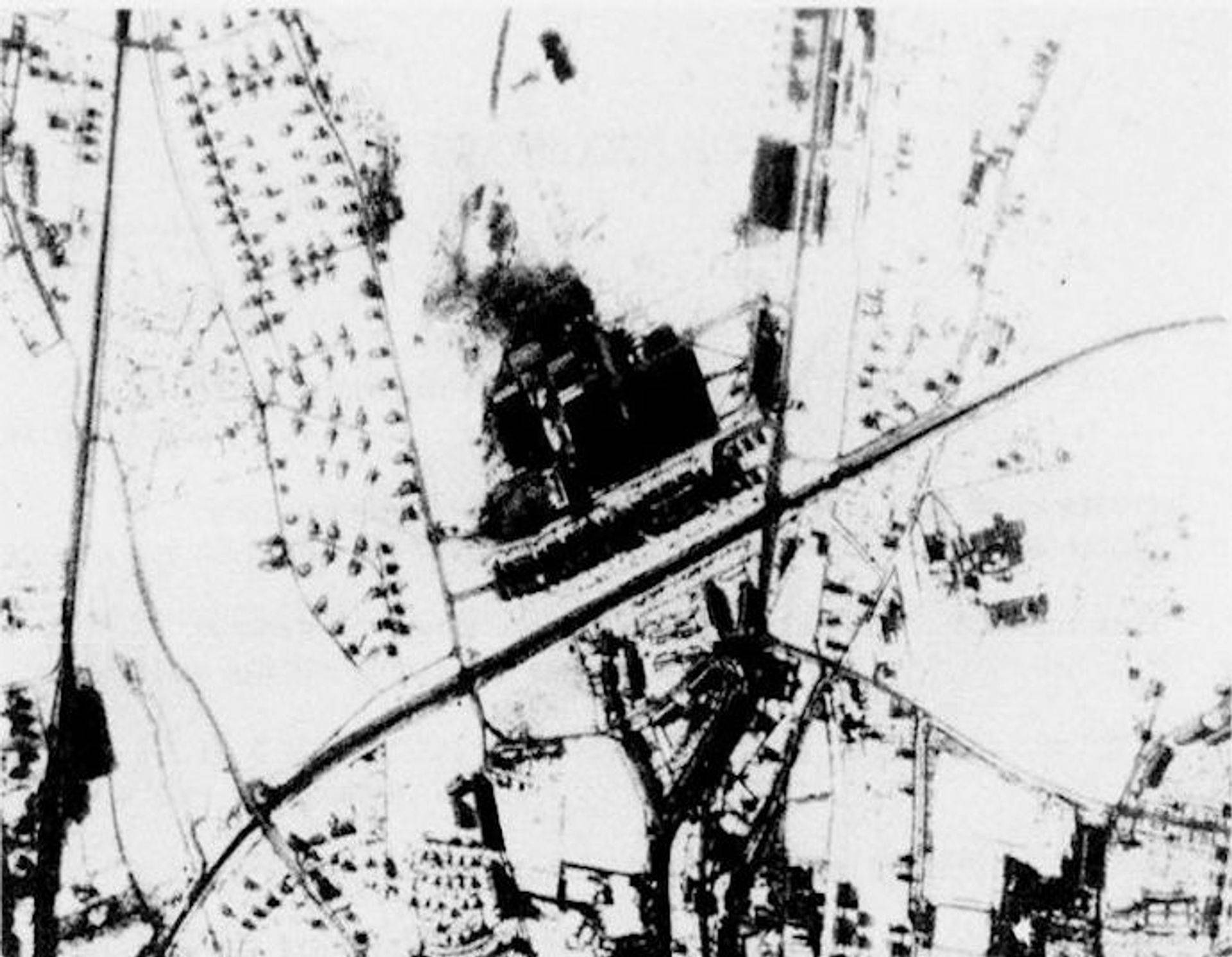
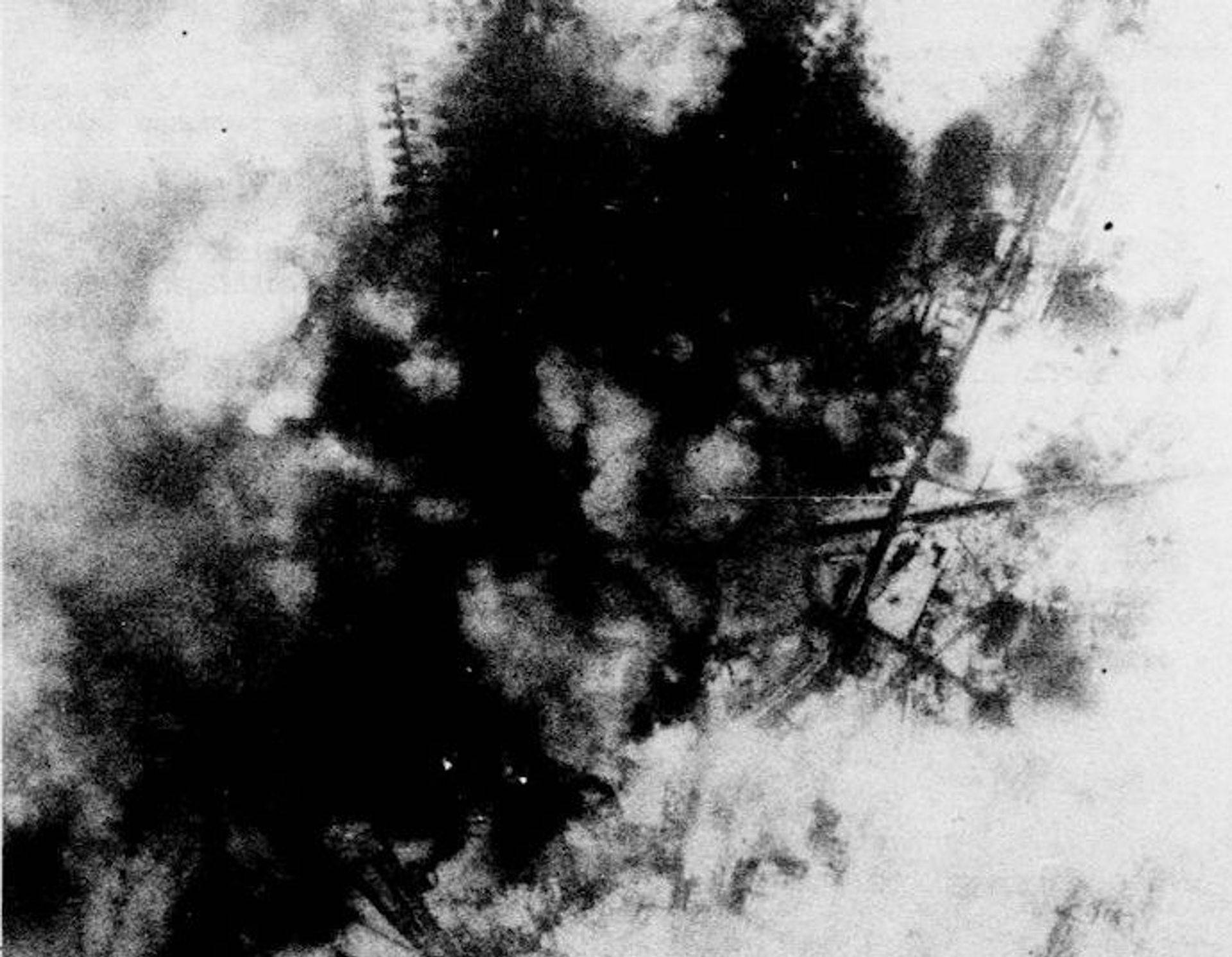
V. Procedure Check List
Air Commander
1. Briefing
b. Determine where various planned duties will have to be executed enroute and designate the crew member who is responsible for these duties.
c. Determine definite cockpit procedure for Pilot, Co-Pilot and Command Pilot and the duties for each.
d. At main briefing, brief every Pilot and Co-Pilot on the VHF Channels they are to stand by on.
e. Discuss and go over the duties of the Lead Bombardier
f. If a PFF Lead Crew is to be used, go over this entire procedure with them.
g. Discuss thoroughly with the Bombardier and Navigator the planned maneuver at the IP and run to the target. Impress upon them that this particular maneuver must be exact.
2. Assembly
a. During assembly have the Engineer or Radio Operator constantly firing recognition flares. Keep your formation as close to the buncher as possible.
b. Make good all times at control points, and if late at one point, cut directly to the next point that can be made on time.
c. Don’t hesitate to use VHF, if necessary, to assemble the Combat Wing and Division properly.
d. Have your Formation Control Officer or Tail Gunner make a constant report on the position of your own Group, Combat Wing and Division.
e. Use your assembly points A, B, C and D to assist any Group or Combat Wing that is late in assembling.
f. Fire flares for all maneuvers.
3. Enroute
a. On departing the English coast, entering the enemy coast, and at all control points given in the Field Order, send in the clear by W/T or R/T the exact time crossing these points, altitude if other than briefed, the number of miles off course, if any. This report is to be submitted by the Division Leader, Combat Wing Leaders and, if a Group becomes separated from its Combat Wing and is returning to base, this report should be submitted by the Group Leader. (All W/T messages should be sent with the exact time the control point is crossed. Speed is essential.)
b. Continually check with your observer on your formation. Keep the Division in good formation at all times.
c. Constantly check on the airspeed, altitude and course. At all times hold a constant altitude.
d. Using Channel “C” on VHF, keep in contact with your friendly fighter support.
e. After reaching altitude and your C-1 or A-5 is properly set up and operating, have your Bombardier making dry runs enroute to the target. C heck with your Bombardier several times on the route in to see if he is continually getting wind drifts for his bombsight.
4. IP – Target – Rally Point
a. Upon reaching the IP, fire the proper flare and transmit the IP code word on R/T.
b. Start your turn short of the IP so as to fly down the IP – target course exactly on course.
c. Fly as straight a course as possible from the IP to the target, no S-ing, no evasive action less than two minutes from bob release time.
d. Check to see that the navigator is assisting the bombardier in pin-pointing himself from the axis of attack and picking up the target.
e. Have the Radio Operator hold the bomb-bay doors open and check “bombs away”.
f. After “bombs away” continue straight ahead for 15 seconds, reduce power settings, letting down 1,000 feet, and proceed to the Rally Point.
g. If necessary, slow up to permit the Group and Combat Wing to assemble as rapidly as possible.
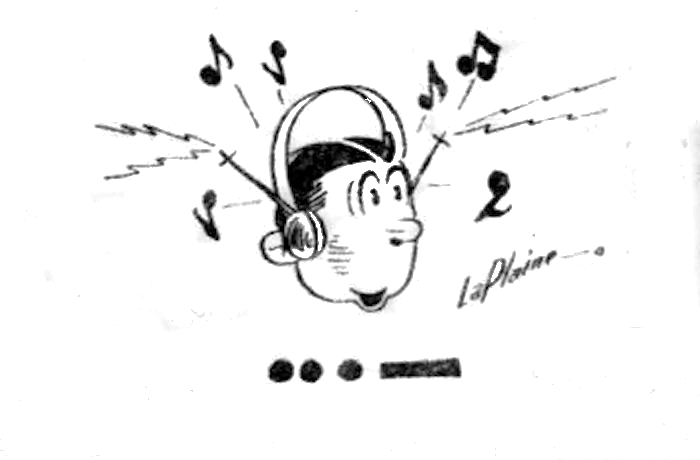
5. Route Out
b. In making your let-down to the proper altitude for returning home, hold an exact rate of descent and air speed.
c. Assist your Navigator in pin-pointing himself along the route home.
d. Again report in the clear on W/T your exact position and time at the control points along the route.
e. Constantly check your airspeed and altitude, make it easy for those who are flying behind you.
f. Check you observer to see if there are any stragglers. If possible to slow your formation up and protect the stragglers, do so, but not if it in any way endangers the rest of the formation.
g. Keep on the alert for constant enemy attack. Check to see that your Gunners are on the alert and not sitting on the floor, smoking, etc.
h. Fly the briefed course at all times.
i. Keep the friendly fighters informed as to your position.
j. Slow down on the way out from the target and give the cripples a square break whenever you can.
Pilot
1. Before Take-Off
b. Check status of crew the evening before a mission and just before briefing.
c. Study carefully the whole missions with the Bombardier and Navigator. Be sure you have a miniature map of the entire flight.
d. Discuss the conduct of the mission from take-off [to] landing with the Group Commander and the Deputy Lead Crew. Make pertinent notes on your flight plan map.
e. Consult crew chief on pre-flight of aircraft and conduct the following inspections:
(1) Fuel Load.
(2) Oxygen pressure, main shut of valves.
(3) Bomb Load (in conjunction with Bombardier).
(4) Ammunition load including position of reserve boxes.
(5) Placement and condition of tires [sic].
(6) Inflation and condition of tires.
(7) Nose-wheel accumulator pressure.
(8) Visual inspection of aircraft.
(9) Question armament men and your own Gunners in regard to condition of guns.
(10) Hydraulic fluid level and position of reserve can of fluid.
(11) Windows and other glass surfaces spotlessly clean.
f. Assemble crew and check their personal equipment.
(1) Proper clothing.
(2) Parachutes.
(3) Life vest (check CO2 Capsules)
(4) Escape kits.
(5) Bail-out oxygen.
(6) Headsets.
(7) Throat mikes.
(8) Extra oxygen masks.
(9) One extra parachute whenever possible.
g. Have crew at their stations with equipment adjusted not less than 15 minutes before taxi time.
2. After Take-Off
a. Fly according to standard operating procedures and briefed plan for climb and assembly. If assembling over the overcast, take particular care to hold a constant circle around the buncher or splasher by keeping radio compass on 270 degrees.
b. Pay particular attention to proper airspeed and power setting. If flying in a high or low Group position, remember you are an integral part of a larger formation – the Combat Wing. Above all, avoid prop wash of proceeding Groups.
c. Instruct radio operator to switch on IFF.
d. Check that VHF Channel is monitored at all times.
e. Inform Gunners when to test-fire guns.
f. Constantly check with Navigator on course.
g. Set up the C-1 or A-5 auto-pilot and turn ship over to the Bombardier at the IP.
h. After bombing, follow the briefed rally procedure.
Note: Many of the duties formerly performed by the Lead Pilot are now performed by the Commander riding with him. (See Group Leaders Manual)
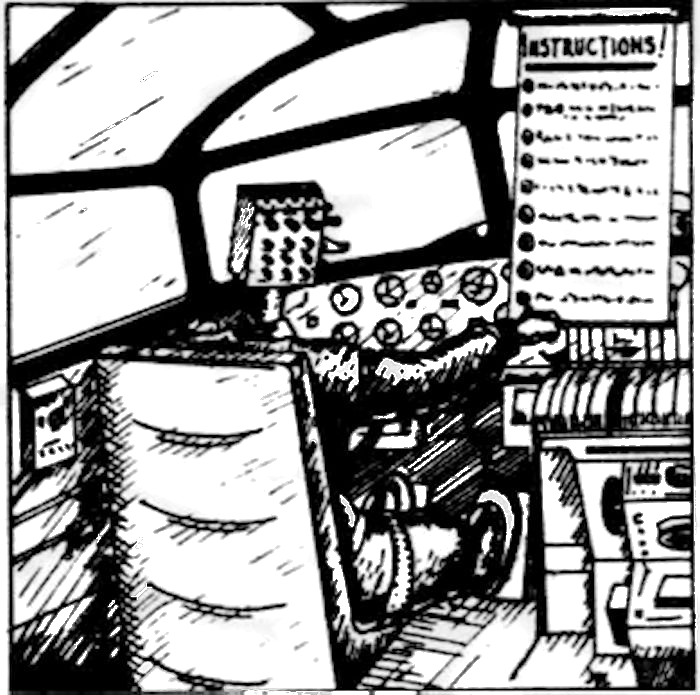
Navigator
1. At Pre-Briefing
a. Thoroughly familiarize himself with the target and target area.
b. Thoroughly study route in and out with attention to check points and defended areas.
c. Discuss route and target with Pilot, Bombardier, Air Commander and S-2 personnel.
2. At Briefing
a. The Lead Navigator should have the following information:
(1) Route.
(2) Times to be made good.
(3) Control Points.
(4) Fighter rendezvous
(5) Special equipment information i.e., GEE frequencies and chains, H2X information, GH stations, frequencies, etc.
(6) Maneuvers and disposition of other forces.
b. Check maps and personal navigation equipment to make certain that every necessary item is at hand.
c. Synchronize watches with crew.
d. Review entire flight plan with Air Commander.
e. Discuss track from IP to target with Bombardier and review coordination procedures for bomb run.
3. Before T.O.
a. Check compasses for synchronization, also API if installed.
b. Check GEE equipment and make certain RF units are in racks.
c. Check radio compass.
d. Check compass, airspeed indicator, altimeter correction cards.
e. Re-check maps, personal navigation equipment and check for flimsies.
f. Converse with crew on all aspects of the mission.
4. During Assembly
a. Keep the Air Commander informed at all times as to:
(1) His position relative to the Combat Wing Assembly Line or DAL, whichever is appropriate.
(2) Difference in time and altitudes from that briefed.
(3) The next heading to be taken and time to take same.
5. Enroute to Target
a. Notify Air Commander of next heading, time to be taken and ETA for next turning point.
b. Five minutes before Control Point or Fighter Rendezvous, notify Air Commander as to position and time (early or late).
c. Check course, position and wind as often as possible, using best information available.
d. Exert all possible effort to keep formation on course or if unable to do so, keep Air Commander notified of exact position relative to briefed course and times.
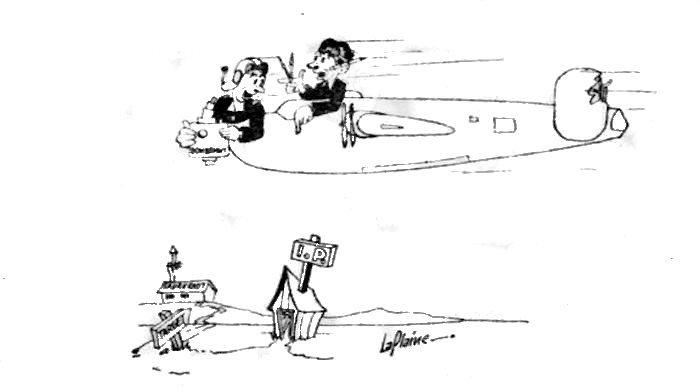
e. Keep Bombardier informed as to wind, etc., expected on bomb run.
f. Prior to IP, give Bombardier accurate drift and ground speed for bomb run.
6. From IP to Target to Rally Point
a. At the IP assist Bombardier in locating target and notify radio operator to fire indicating flares.
b. Check racks, intervalometer, select handle, bomb-bay doors “open”.
c. On “bombs away” salvo immediately.
d. Make appropriate log entries.
e. Direct aircraft Rally Point
7. From Rally Point to England
a. Same as Route Out with exception of “e” and “f”
8. Instrument Let-Down
a. Direct formation to base, using GEE, radio compass and D/R to be certain as to position.
b. Keep Air Commander informed as to position.
9. Interrogation
a. If Wing or Division lead, give log to Staff Navigator immediately to be copied and forwarded to 2d Bombardment Division.
b. If not Wing or Division Lead, go to S-2 interrogation.
c. Report route flown to Staff Navigator and make up Lead Navigator’s Report.
d. Report any difficulties encountered to Staff Navigator.
Bombardier
1. At Pre-Briefing
a. Study thoroughly the target and target area.
b. Familiarize himself with the route in and out with special attention to check points at the IP and target.
c. Study and discuss [the target] with the pilotage navigator, dead reckoning navigator, pilot, formation commander and briefing S-2 officer.
d. Get a thorough understanding of the mission and plan for other units including their targets and routes. Understand the flak and fighter opposition expected.
e. Assure himself that his battle folder is complete and arranged satisfactorily.
2. At Main Briefing
a. Further his general knowledge of the mission, weather, flak, fighters, and routes.
b. Synchronize watch with given hack.
c. Review target again.
3. At Bombardier Briefing
a. Get briefing form and thoroughly fill it out. Receive altitude grid and correct bombing tables.
b. Make certain that all bombing information is covered and understood by Wing Bombardiers.
4. Before Take-Off
a. Make sure your bombardier kit is complete with E-6-B, C-2 stop watch, pliers and screw driver, dropping angle scales, tachometer, tables for bombs carried, forms and target grids.
b. Check your personal equipment thoroughly.
c. Ground check auto-pilot and bombsight by a prescribed pre-flight inspection. Set altimeter to read 29.92.
d. Check the bombs, fuses, racks, shackles and releases carefully. Arming wires and fuses should be secure.
e. Test bomb-bay doors, interphone, oxygen, indicator lights, and intervalometer.
f. Brief crew on final coordination in the target area.
5. After Take-Off
a. Pill pins yourself before reaching altitude. This should be done after reaching 5,000 feet.
b. Turn on equipment and pre-set data in briefed metro.
c. Checks actual temperature against forecast values.
d. Checks the crew for oxygen before altitude of 10,000 feet is reached and at regular intervals during the entire flight.
e. Notify the crew upon arrival of friendly fighter support
6. At Altitude
a. Figure true altitude and true airspeed.
b. Level the bombsight.
c. Check all data for accuracy.
d. Make several trial runs.
e. Set up ABC Computer.
f. Continue making constant checks on drift.
g. Make final adjustments and another trial run just prior to IP.
h. In spare time, study target material and the approach; check the time interval from the IP to the target.
7. Over Enemy Territory
a. Observe the terrain for military activity and report same to the Navigator.
b. Cooperate with Navigator and Pilotage Navigator in locating IP and target. Assist Pilot to properly uncover formation and to turn own aircraft and formation onto the pre-determined heading toward the target.
c. Open the bomb-bays and re-check auto-pilot operation.
d. Turn on racks and positions, arming lever to select. Re-check your switches and intervalometer.
e. Set intervalometer according to accurate ground speed.
f. Notify pilot when target is seen.
g. Make regular bomb run and notify pilot at “bombs away”. Have navigator salvo the racks when the indices cross. Check with radio operator to see racks are cleared.
h. After “bombs away”, turn off switches, place select lever into lock position and close bomb-bay doors.
Radio Operator
1. Before Take-Off
a. Check radio sets and interphone system
b. See that all necessary frequencies are tuned and calibrated. Set transmitter up on wing operational frequency.
c. Check spare tubes and fuses.
d. Check flimsies and log sheets.
e. Check IFF.
f. Check pyrotechnic signals and flare gun.
g. See that aerials are clean and connections tight.
h. Check VHF.
2. Enroute to Target
a. Switch off IFF when 10 miles out or when notified by Pilot.
b. Listen out on VHF and Wing Operational Channel continuously.
c. Transmit proper procedure signals and messages as requested by the Pilot.
d. Turn on camera as briefed by the Group Photo Officer.
3. Enroute to Base
a. When instructed by Group Leader, transmit strike messages after bombing until an acknowledgement is received.
b. Change transmitter and request MF/DF Fixes, QDM’s, or initiate SOS if requested by Pilot.
c. Switch on IFF when notified by the Navigator.
d. Disconnect IFF detonator before landing.
Gunner
2. Check heated flying suit.
3. Check interphone – command, etc.
4. Check oxygen mask and oxygen outlet and supply.
5. Prepare guns for high altitude operation.
a. Wipe working parts so that a light film of AXS777 lubricant is present.
b. Fill oil buffer with 2-36D oil.
c. Set oil buffer two notches from open.
d. Set headspace properly – back off three notches from battery position.
e. Assemble gun properly in receiver.
f. Adjust G-11 solenoid properly with timing gauge.
g. Charge gun without ammunition and see if it is all right.
6. Check ammunition for feeding – be sure double end loop goes into leeway of gun.
7. Turret operators check the following:
a. Visual inspection through a 50-hour turret inspection, includes sight, extra fuses, etc.
b. Check manual firing mechanism and controls.
c. Ball turret operator check computing sight.
d. Ground check turrets by operation.
8. Mentally check yourself on the deflections used in the zone system of aiming as well as size of common fighter in sight reticle at various ranges so range estimation is fresh in your mind.
9. Be prepared to report to the pilot your observations of friendly and enemy actions quickly and clearly.
10. Test-fire guns when ordered to do so by pilot and report immediately any malfunction.
